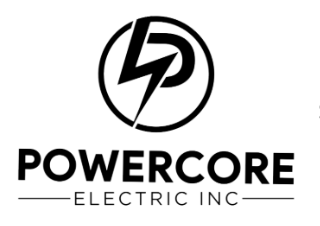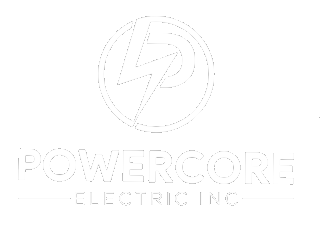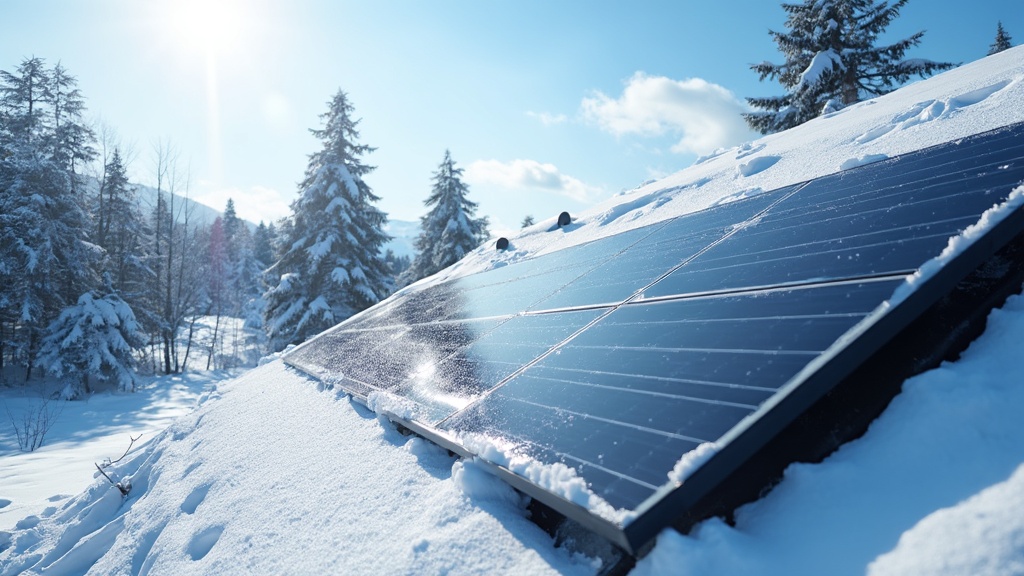Introduction
As winter sets in and temperatures drop, many homeowners may wonder about the effectiveness of their solar panels in cold weather. Surprisingly, solar panels can actually thrive in these chillier conditions, often performing better than in the heat of summer.
While snow may temporarily obscure sunlight, these systems are designed to shed snow naturally, allowing for continued energy production. With the right maintenance and understanding of how to optimize solar panel efficiency during winter months, homeowners can enjoy reliable energy generation year-round.
This article explores the benefits and challenges of solar energy in colder climates, offering practical tips for maximizing performance and understanding the incentives available for those looking to invest in solar technology.
Do Solar Panels Work in Cold Weather?
Definitely, solar panels in cold climates can thrive even in chilly conditions! In fact, solar panels in cold climates often perform better when temperatures drop, as the cooler conditions help their solar cells operate more efficiently. This indicates that in winter, your solar panels in cold climates may generate more power than they would in the warmth of summer.
However, it’s essential to keep in mind that winter days tend to have less sunlight, which can impact the efficiency of solar panels in cold climates. In the first 1,000 hours of operation, the surface can form a layer of boron oxide that may reduce efficiency by 1-3%. To make the most of the available sunlight, homeowners should ensure their energy panels are installed at an optimal angle.
This simple adjustment can significantly enhance exposure to sunlight, maximizing power generation from solar panels in cold climates even on those shorter, chillier days. As Cory O’Brien, a senior director with over eight years of expertise in renewable energy, emphasizes, ‘Sharing knowledge about energy efficiency helps homeowners understand how to improve their carbon footprint.’ Additionally, investing in a dependable battery backup is essential for preserving autonomy during power outages and unfavorable weather conditions.
For optimal energy storage, consider options like the Tesla Powerwall or LG Chem RESU, which are among the best battery choices for efficient energy storage. Moreover, routine upkeep and creative cleaning methods are crucial for maintaining the efficiency and sustainability of photovoltaic systems. Rearranging energy collectors can significantly boost their performance; for example, the Time Tracker Mount enables automatic modifications to accommodate seasonal variations, possibly increasing output and effectiveness by as much as 40% in comparison to stationary setups.
So, rest assured, your energy collectors, such as solar panels in cold climates, can remain a wise investment throughout the year! Take the first step towards a more sustainable life today by getting your free, personalized estimate.
Impact of Snow on Solar Panel Efficiency
While snow can temporarily hinder the efficiency of energy systems, solar panels in cold climates are specifically engineered to shed snow naturally due to their smooth surfaces, thus minimizing any obstruction to sunlight. According to ASCE 7, snow loads for photovoltaic systems can be significant, often calculated in pounds per square foot (psi), which directly impacts their performance. In instances of significant snow buildup, homeowners can softly sweep away the snow with a soft broom or employ professional cleaning services that focus on maintenance.
Furthermore, the angled setup of photovoltaic systems further aids in this process, allowing snow to slide off more easily. Interestingly, the reflective qualities of fresh snow can improve power production for solar panels in cold climates, as sunlight bounces off the snow and onto these panels, creating a unique advantage. Recent insights indicate that comprehending the intersection of photovoltaic technologies with environmental factors is essential for maximizing power output.
For instance, a case study titled ‘Estimating Future Losses Due to Snow’ demonstrates how projected future hourly temperatures and adjusted snowfall data can assist in estimating potential losses, highlighting the long-term impacts of snow cover on power generation. To ensure optimal performance during winter months, regular maintenance is key. Keeping the panels clear of debris, utilizing government programs for energy maintenance, and performing periodic checks can significantly maximize efficiency.
As Erin Whitney, Research Assistant Professor and Director of the Solar Technologies Program at the Alaska Center for Energy and Power, observes, ‘Understanding the interaction between photovoltaic systems and their surroundings is vital for optimizing power output.’ By being proactive and informed, homeowners can enjoy dependable renewable energy, including solar panels in cold climates, while also considering complementary solutions such as Tesla home chargers and battery storage options to enhance their overall energy strategy.
Choosing the Right Solar Panel for Cold Climates
If you’re a Long Beach tenant contemplating solar panels in cold climates, monocrystalline silicon units are your optimal choice. These units excel in low light and cooler temperatures, making them a popular choice for homeowners who rely on solar panels in cold climates with significant snowfall. In fact, regions with over 30 inches of January snowfall span across 18 states, underscoring the need for effective solar solutions even in frosty conditions.
It’s also essential to pay attention to the temperature coefficient of the modules; for instance, a coefficient of -0.35% indicates that they will lose about 0.35% efficiency for every degree above 77°F. Thus, systems with a lower temperature coefficient will perform better in cold conditions. To optimize your energy system, investigate local producers who create solar panels in cold climates, as they understand regional obstacles and can offer customized suggestions.
Furthermore, collaborating with a local energy installer can assist you in understanding your specific weather conditions, ensuring you select the appropriate equipment for optimal performance during winter months. As observed by energy specialists, effective solutions are crucial in regions with extreme weather. It’s also important to consider design and installation measures to prevent damage to photovoltaic (PV) systems in harsh winter conditions.
Comprehending how to determine sunlight collector performance can enable you to evaluate effectiveness on your own; refer to the case study named ‘Calculating Sunlight Collector Performance’ for a formula that can assist you in this process. Moreover, shifting to renewable power can result in substantial economic advantages, including lowered electricity expenses and possible tax benefits offered by government initiatives. Cleaning services for photovoltaic surfaces can also improve efficiency, ensuring they function optimally regardless of the weather.
By exploring these insights, you can make informed decisions about shifting to renewable energy, enhancing both your economic and environmental footprint.
Winter Maintenance Tips for Solar Panels
To maintain your solar units functioning optimally throughout the winter season, it’s crucial to incorporate regular inspections into your routine. Start by checking for any debris, such as leaves or branches, that could cast shade on your surfaces; clearing these away will help maximize their sunlight exposure. It’s also important to monitor snow accumulation, especially since snow loads for a specific site are typically calculated using ASCE 7, which can result in significant ground snow loads in pounds per square foot (psi).
A buildup can significantly hinder performance, so staying vigilant is crucial. If temperatures drop, take a moment to check for any ice buildup on the surfaces, as this can hinder efficiency too. Remember, ensuring your energy panels are clean is just as important as regular inspections.
Regular cleaning improves power production and aids in the longevity of your system. An annual professional inspection is a smart move to make sure everything is functioning properly. According to the ‘Post-Storm Inspection Protocol,’ after severe winter weather, it is recommended that trained professionals inspect solar systems for damage, addressing any potential issues before they snowball into bigger problems.
This proactive method not only maintains your system in optimal condition but also boosts its lifespan, providing you with peace of mind as you adopt renewable resources. As one expert noted, “Did you notice a significant drop in energy production? This issue can stem from various factors, with the most prevalent being dust and debris accumulation.
Understanding the environmental elements influencing energy efficiency is essential for optimizing the performance of solar panels in cold climates, particularly during winter conditions. Interestingly, researchers from the Indian Institute of Engineering Science and Technology have developed a model to estimate dust accumulation on photovoltaic panels, which is crucial for both rooftop and commercial plants. This model takes into account various factors such as particulate matter concentration, tilt angle, and weather parameters, making it a comprehensive tool for optimizing maintenance of the surfaces.
Understanding Incentives for Solar Installations in Cold Climates
For homeowners contemplating renewable power, it’s reassuring to understand that numerous areas offer an array of financial incentives, tax credits, and rebates specifically aimed at making residential installations more economical. Notably, the United States imported over 3 GW of photovoltaic cells in Q2 2024, marking the fourth consecutive quarter of growth and showcasing the robust demand for energy solutions, particularly solar panels in cold climates. States like Maryland, New York, Rhode Island, South Carolina, and Washington D.C. are leading the charge with significant incentive programs for renewable energy, such as:
- Maryland’s Renewable Energy Certificate (SREC) program
- New York’s NY-Sun initiative
These programs can help you save, even if you don’t have sky-high electric bills.
As EnergySage points out, ‘The competition also helps drive down prices,’ which is especially relevant given the increasing number of incentives available. The recent California Net Metering 2.0 Update illustrates how evolving financial incentives are positively impacting energy installations, providing key takeaways for stakeholders. To maximize these incentives, it’s wise to research your local resources and government websites to discover the specific programs available in your area.
Additionally, homeowners should consider engaging with local installation companies that can provide valuable insights into available rebates, panel cleaning services, and battery options that can enhance the efficiency of their energy systems. Embracing solar energy is not just a smart financial move; it’s a step toward a more sustainable future for our planet.
Conclusion
Embracing solar energy during the winter months can be a rewarding choice for homeowners, as solar panels are designed to operate efficiently even in colder conditions. With the right maintenance and understanding of how to optimize performance, solar systems can produce substantial energy, sometimes even outperforming their summer output. By ensuring panels are installed at optimal angles and remaining proactive about snow and debris clearance, homeowners can maximize energy generation throughout the season.
While snow may pose temporary challenges, it’s reassuring to know that solar panels can shed it naturally and even benefit from the reflective properties of fresh snow. Regular inspections and maintenance are key to keeping systems running smoothly, allowing for continued energy independence and reliability. Homeowners should also explore the variety of incentives available that make transitioning to solar more affordable, especially in states with robust solar programs.
Ultimately, investing in solar technology not only contributes to personal savings and energy efficiency but also promotes a sustainable future. As winter approaches, now is the perfect time to take action and ensure that solar panels are prepared to deliver clean, renewable energy all year round.


